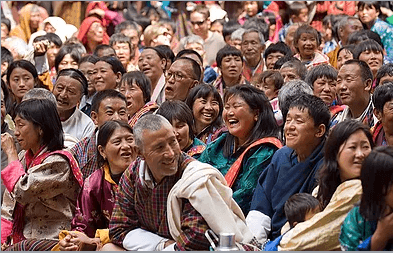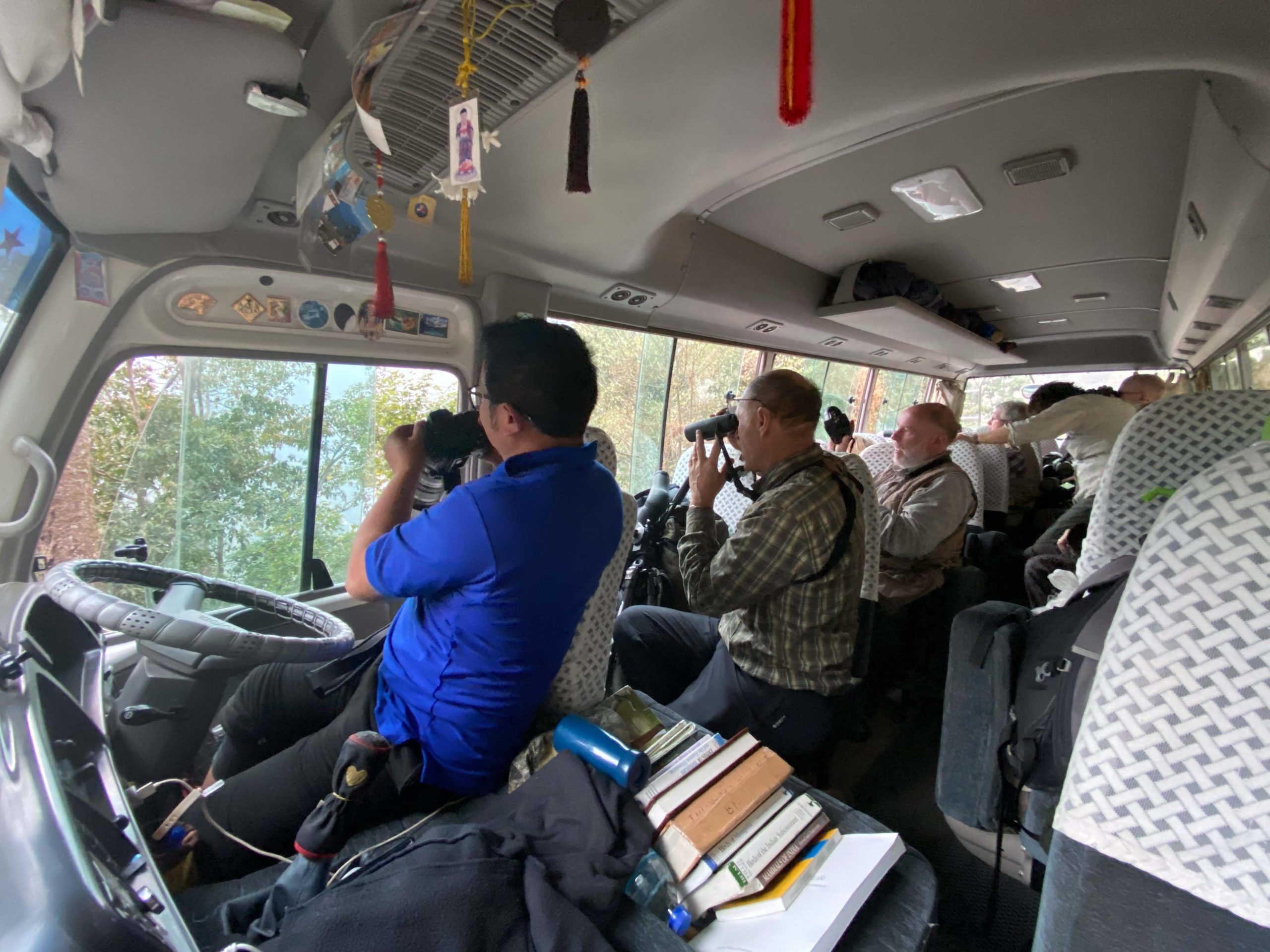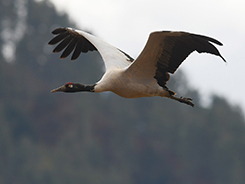12 Days – In Search of Birds, Mammals and Flowers of Bhutan



Trip Overview
Description
Bhutan has been protected by its isolation within the Himalayas and its mountainous terrain. The deep valleys and almost impenetrable jungles have acted as allies in preventing destruction of the forests. Today over 70% of the land is forested and 60% is protected with 10 National Parks, together with great variation in altitudes from 150 m to 4,500m, creates an extremely wide range of habitats from undisturbed tropical jungles, through mixed temperate broadleaved forests to high alpine meadows. In this pristine environment where religion states that all life is sacred, wildlife flourishes, making Bhutan one of the top ten bio-diversity hot spots in the world. To date Bhutan has over 780 species of birds and lies within one of the 221 Global Endemic Bird Areas with 28 species of birds endemic to Eastern Himalayas.
Our Spring birding tour will take you through the most amazingly beautiful landscape, full of birding excellence, where we should encounter some 350 species of birds, over 14 species of mammals and amazing variety of butterflies and flowers.
There will also be time to see the amazing architecture, visit dzong’s and meet the friendly Bhutanese people and a gentle hike to Tigers Nest Monastery. Overall, experience the unique culture of Bhutan, expanding your interests but not compromising your main objectives!
| Number of Guests | Price Per Guest |
|---|---|
| 1 | US $ 4,220 |
| 2 | US $ 4,110 |
| 3-12 | Twin sharing cost: US $ 4,000 |
Single Occupancy (Optional) – US $275
Flights are not included in the tour cost.
Brief Itinerary
This morning you take the Drukair/Bhutan Airlines flight to Paro, with views of the Himalayas. Stop by Pa Chhu river for Himalayan riverine birds. Species: Ibisbill, Brown Dipper, Common Snipe, Wallcreeper, and more.
Overnight: Hotel Olathang or similar, Paro, 2,300m. (Meals: B, L, D)
Morning birding en-route to Chele La at 3,780m. Views of Jhomolhari, Jichu Drake and Paro & Ha valleys. Birds: Himalayan Monal, Blood Pheasant, Bearded Vulture, Himalayan Cuckoo, Rufous-bellied Woodpecker, Greenish Warbler, and more.
Overnight: Hotel Yak & Yeti or similar, Thimphu, 2,300m. (Meals: B, L, D)
Early morning at Dochu La (3,150m) and explore mixed broad-leafed forests. Birds include Hodgson’s Hawk Cuckoo, Fire-tailed Myzornis, White-collared Blackbird, Blue-fronted Robin. Explore Royal Botanical Park at Lampelri. Visit Punakha Dzong.
Overnight: Meri Puensum Resort or similar, Punakha, 1,300m. (Meals: B, L, D)
Birding along Puna Tshang Chhu valley. Stop at Lawa La (3,350m) for Ward’s Trogon, Long-billed Thrush, Spot-winged Grosbeak. Visit Gangtey Monastery in Phobjikha valley. Watch for Black-necked Cranes, Oriental Skylark, Red-billed Chough.
Overnight: Gakiling guesthouse or similar, Phobjikha, 2,800m. (Meals: B, L, D)
Travel east through high boreal forests of Pele La. Birds include Himalayan Vulture, Solitary Snipe, Black-faced Laughingthrush, Hume’s Bush Warbler, Crimson-browed Finch. Visit Chendibji Chorten and villages en-route.
Overnight: Yangkhil Resort or similar, Trongsa, 2,000m. (Meals: B, L, D)
Drive along forest roads to Tingtibi. Watch for Blue Whistling Thrush, Spotted Forktail, Mountain Hawk Eagle, Crested Goshawk, Red-headed Trogon, Golden Langurs. Birding in sub-tropical Tingtibi: Crested Kingfisher, Crimson Sunbird, White-crested Laughingthrushes.
Overnight: Hotel Twang or similar, Tingtibi, 600m. (Meals: B, L, D)
Drive along Tingtibi – Gomphu road, bamboo forests for Tawny Fish Owl, White-browed Scimitar Babbler, Rufous-throated Partridge, White-bellied Heron. Continue birding in Gomphu for Sultan Tit, Grey-chinned Minivet, Rufous-necked Laughingthrush.
Overnight: Hotel Twang or similar, Tingtibi, 600m. (Meals: B, L, D)
Birding at Tama La (1,660m) for Oriental Honey Buzzard, Yellow-rumped Honeyguide, Golden-throated Barbet. Journey to Gelephu with interesting species like Alexandrine Parakeet, Green Bee-eater, Oriental Bay Owl (if lucky).
Overnight: Hotel Kuku Grand or similar, Gelephu, 250m. (Meals: B, L, D)
Visit Gelephu sewage pond and along Tsirang road. Birds: Black Baza, Red-naped Ibis, Himalayan foothill species like Indian Peafowl, Oriental Pied Hornbill, Hodgson’s Hawk Cuckoo, Fulvous-breasted Woodpecker, and more.
Overnight: Hotel Kuku Grand or similar, Gelephu, 250m. (Meals: B, L, D)
Flight to Paro. Visit Paro Dzong, Nyamai Zam bridge, Chele La road for Kalij Pheasant. Birds: Northern Goshawk, Striated Laughingthrush, Snow Pigeon, Wallcreeper, Pygmy Wren Babbler.
Overnight: Hotel Olathang or similar, Paro, 2,300m. (Meals: B, L, D)
Hike to Taksang Monastery with cultural and birding highlights. Birds include Himalayan Buzzard, Snow Pigeon, Altai Accentor, Little Forktail, White-capped and Plumbeous Water Redstarts. Return for farewell dinner.
Overnight: Hotel Olathang or similar, Paro, 2,300m. (Meals: B, L, D)
After breakfast, drive to Paro airport and fly to your onward destination. (Meals: B & L)







